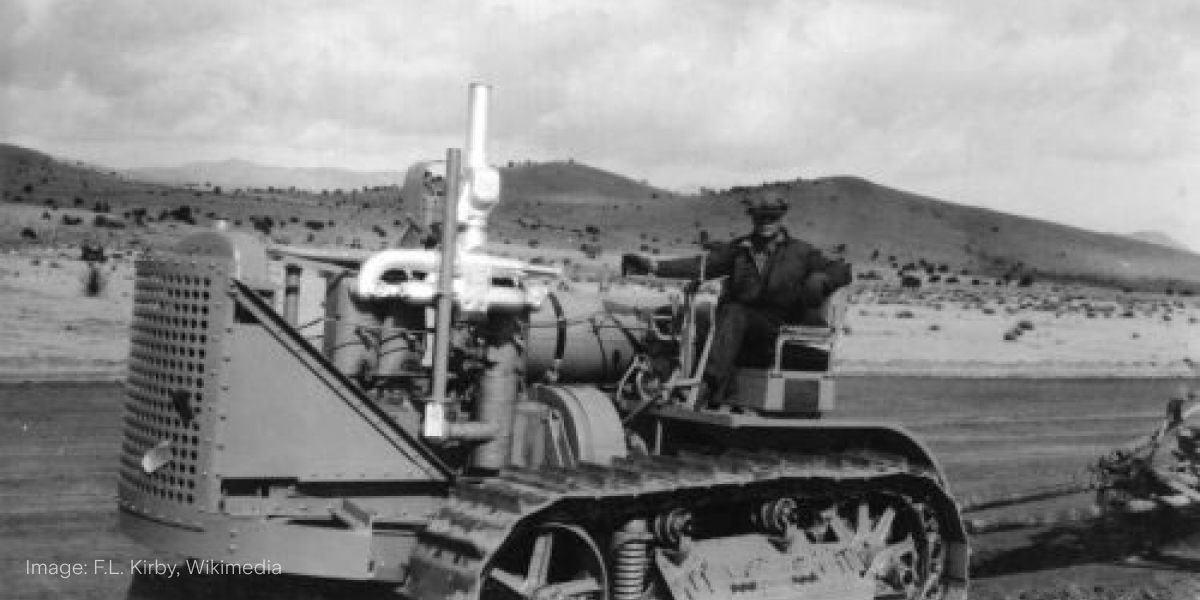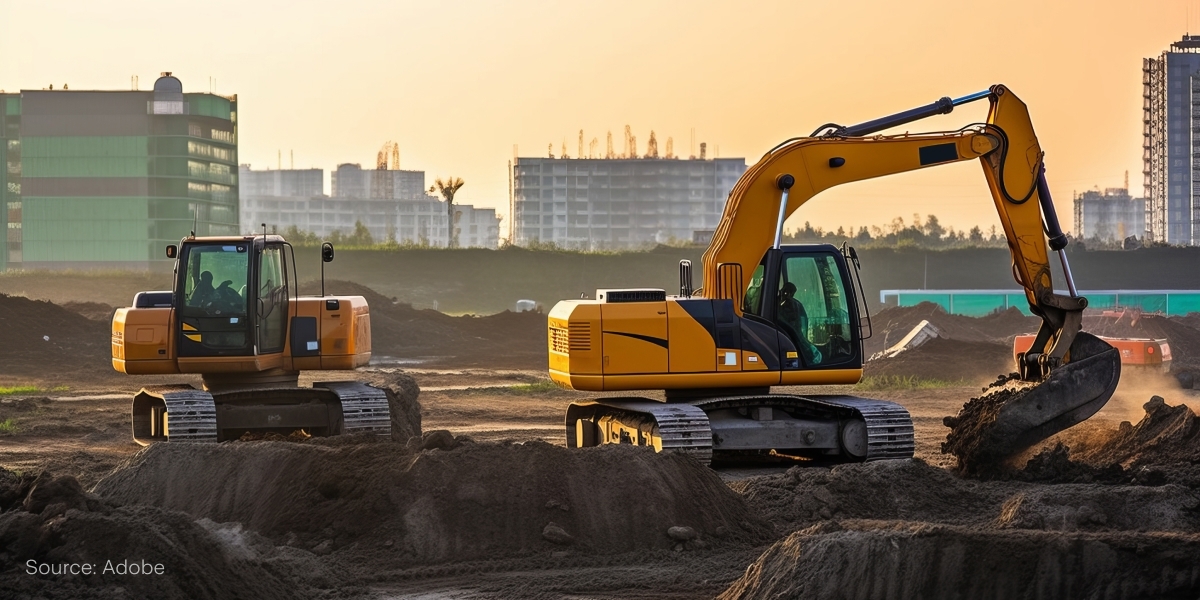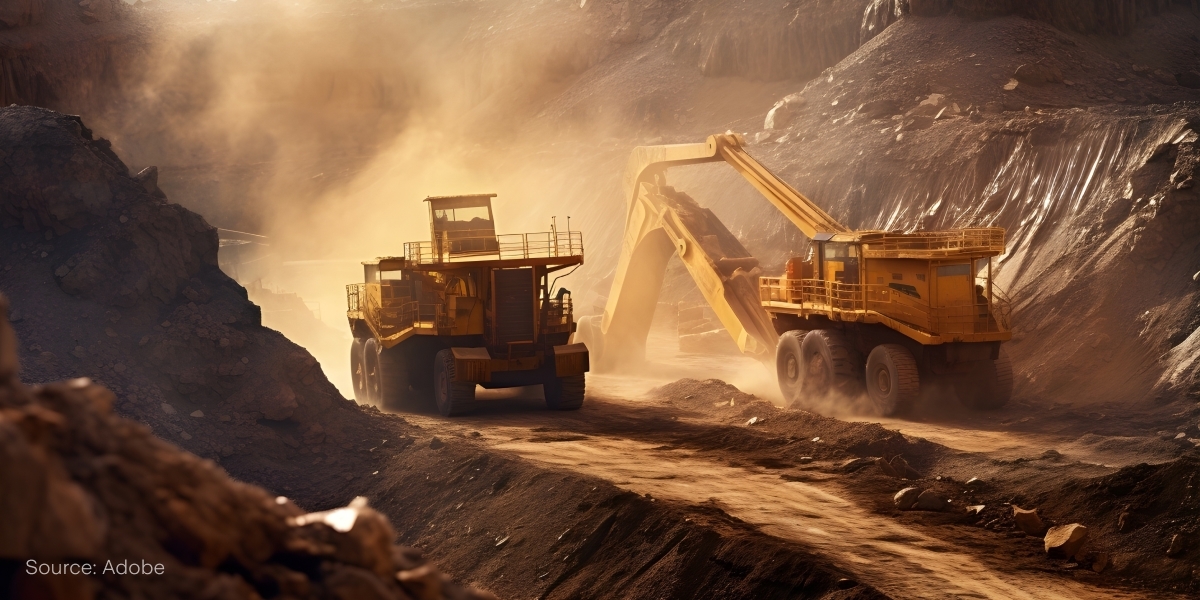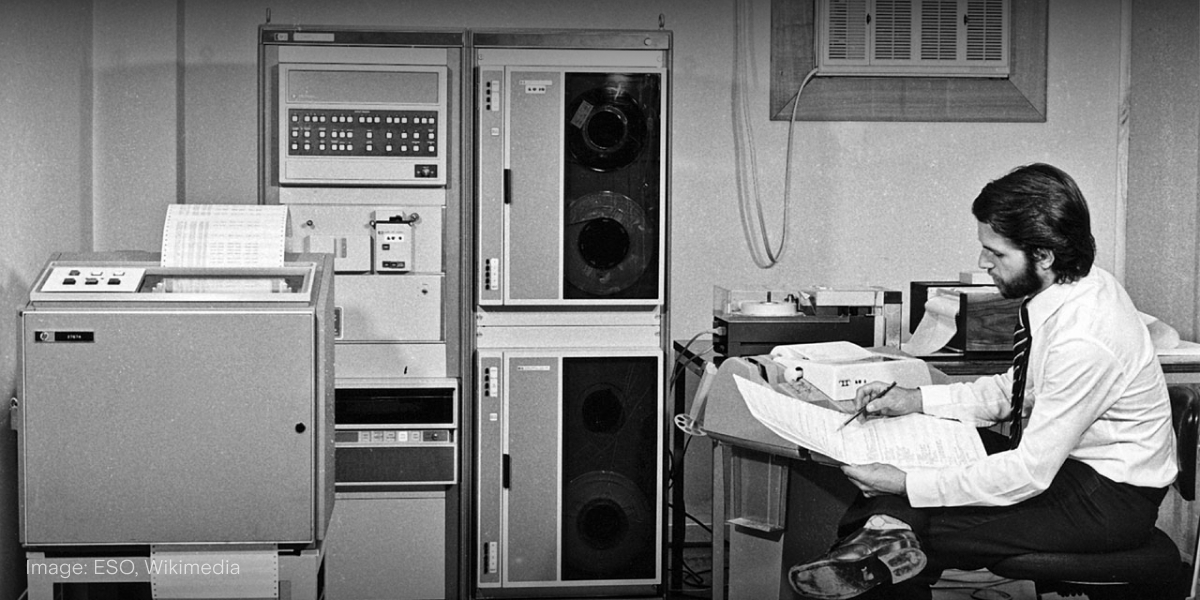
Under the Spotlight Wall St: Caterpillar Inc (CAT)
For almost 100 years Caterpillar has been synonymous with reliable heavy-duty equipment. But could its machinery be used to construct a better future for its shareholders? Let’s put it Under the Spotlight.
.jpg&w=3840&q=100)
Caterpillar ($CAT) is an iconic American company that has played a pivotal role in the development of the construction, agriculture and mining industries around the world. Known for its yellow earth-moving equipment and machinery, its history spans nearly a century.
The firm’s origins can be traced back to the late 19th century when the Holt Manufacturing Company produced steam tractor machines. These early tractors were heavy and had difficulty traversing soft ground. Benjamin Holt experimented with increasing the size and width of the wheels, which resulted in massive, 14-metre-wide tractors. However, this approach made the tractors expensive and hard to maintain.
To address the issue, Holt came up with the idea of replacing the wheels with wooden tracks bolted to chains. On Thanksgiving in 1904, he successfully tested this innovation by ploughing the soggy delta land of Roberts Island, California. This marked a significant advancement in tractor technology and Holt’s first tractor sold in 1907 for US$5,500, which is the equivalent of about US$128,000 when adjusted for inflation.
Holt’s invention allowed for significant productivity gains and was a commercial success. Sales increased during World War I, with tractor engines powering equipment on the battlefield and tractors towing ammunition. However, this reliance on military demand saw the company run into difficulty once the war ended. The machinery the company sold was rarely used in the civilian market, resulting in inventory and debt quickly piling up. The financial situation would only begin to improve in 1925, when the tractor giant merged with its biggest competitor, the C.L. Best Tractor Company, to form Caterpillar Tractor Co.

Digging in
Unfortunately for Caterpillar, the Great Depression then came around. The firm faced significant challenges as the demand for heavy machinery dwindled. However, the company's commitment to innovation and continuous improvement helped it weather this storm. It was during this period Caterpillar introduced diesel engines to its products, which allowed for greater fuel efficiency and more torque, marking a significant technological advancement.
During World War II, Caterpillar would play an important role in a major conflict once again. Its machinery was used for numerous tasks, such as constructing airfields and moving supplies and troops.
The company’s involvement in the war effort significantly boosted its reputation and production capacity. As such, after the war Caterpillar was well-positioned to meet the growing demand for infrastructure development both in the U.S. and internationally. The heavy-machinery manufacturer expanded its product lines to include a wide range of construction and mining equipment, such as bulldozers, graders and excavators.
The 1960s were marked by the brand’s growing global presence. The company established a network of dealers and subsidiaries around the world, enabling it to serve customers in more than 190 countries. This global expansion was critical to Caterpillar's success, as it allowed the company to diversify its revenue streams and mitigate risks associated with regional economic fluctuations. During this period, Caterpillar also introduced innovative technologies, such as its first rigid dump truck, the 769. These advancements further solidified the company's reputation for engineering excellence.

Building foundations
Oil price rises and stagflation in the 1970s caused demand for construction machinery to fall and house prices to plummet in the U.S. In addition, Japanese rival Komatsu ($KMTUY) gained a greater footprint in America, threatening the yellow-tractor manufacturer’s hegemony. The company responded by implementing cost-cutting measures, streamlining operations and diversifying into other businesses, such as financial services (offering leases and loans for its customers to acquire equipment) and engine production.
Although diversification helped make Caterpillar less dependent on a single product line, the company was still very much exposed to the construction business cycle. This exposure worked in the company’s favour in the 2000s, as commodity prices skyrocketed and demand soared not only for construction machinery, but particularly for mining equipment. Caterpillar doubled down on it and shares in the company nearly tripled in the period leading up to 2008.
Despite the real estate bubble popping and the GFC taking place, Caterpillar’s revenue continued to grow due to the ongoing commodity boom, eventually reaching US$65.9b in 2012. But as recession hit the U.S. and metal prices fell, the industrial giant faced serious troubles. Revenues almost halved, declining to US$38b in 2016.
In response, the company embarked on a restructuring plan, which included job cuts and streamlining the business. A change in leadership ushered in a focus on cost reduction and improving margins, setting the stage for Caterpillar's recovery. The COVID-19 pandemic prompted further changes, with the company reducing its inventory by about US$2 billion in a bid to enhance efficiencies.

Constructing growth
Despite this, the company achieved a turnaround in 2021, driven by rising commodity prices and increased capital expenditure by mining companies. One of Caterpillar’s biggest growth drivers is also the rise of electric vehicles, which has increased the necessity for mining metals such as lithium and rare earth elements. However, commodities are also a notoriously volatile industry and lower prices for metals can result in projects being shelved.
Caterpillar is also positioning itself to benefit from increased infrastructure spending under the Biden administration's ‘Build Back Better’ initiative, which is particularly important considering 38% of the machinery manufacturer’s sales come from the United States. The company has made investments in new technologies, such as remote piloting and autonomous operation, but keeping up with industry trends and customer demands requires significant financial and human resources.
Caterpillar has amassed over 125,000 new customers in the past five years and is financing 60,000 new machines annually. With a fleet of 1.9 million construction machines in activity, maintenance and repairs also play an important role in the company’s revenues, which amounted to US$17.3b in Q2 2023, a year-on-year (YoY) increase of 22%. Operational profit for the quarter increased 88% YoY, amounting to US$3.65b. Many commercial projects are dependent on government incentives and there’s a chance the 2024 U.S. election could cause changes in some areas.
Caterpillar not only made more sales, but was also able to charge higher prices as a result of a heated housing market in the U.S. While existing homeowners benefit from mortgages with fixed rates for the long-term in America, higher interest rates and inflation have added extra pressure on those wanting to enter the housing market. More expensive materials combined with labour shortages could see demand fall due to affordability concerns.
For 2023, the company expects revenue to reach US$66.31b, surpassing its all-time high of 2012. While Caterpillar has managed to adapt, innovate and overcome challenges in the past, achieving that number still depends on favourable housing market conditions in the U.S. and commodity prices. In the case of a recession, these targets are likely to be delayed. Whether the role the company plays in providing the horsepower to drive an economic recovery will be enough to regain revenue levels will only become clear in the future.
This does not constitute financial advice nor a recommendation to invest in the securities listed. The information presented is intended to be of a factual nature only. Past performance is not a reliable indicator of future performance. As always, do your own research and consider seeking financial, legal and taxation advice before investing.

Megan is a markets analyst at Stake, with 7 years of experience in the world of investing and a Master’s degree in Business and Economics from The University of Sydney Business School. Megan has extensive knowledge of the UK markets, working as an analyst at ARCH Emerging Markets - a UK investment advisory platform focused on private equity. Previously she also worked as an analyst at Australian robo advisor Stockspot, where she researched ASX listed equities and helped construct the company's portfolios.

